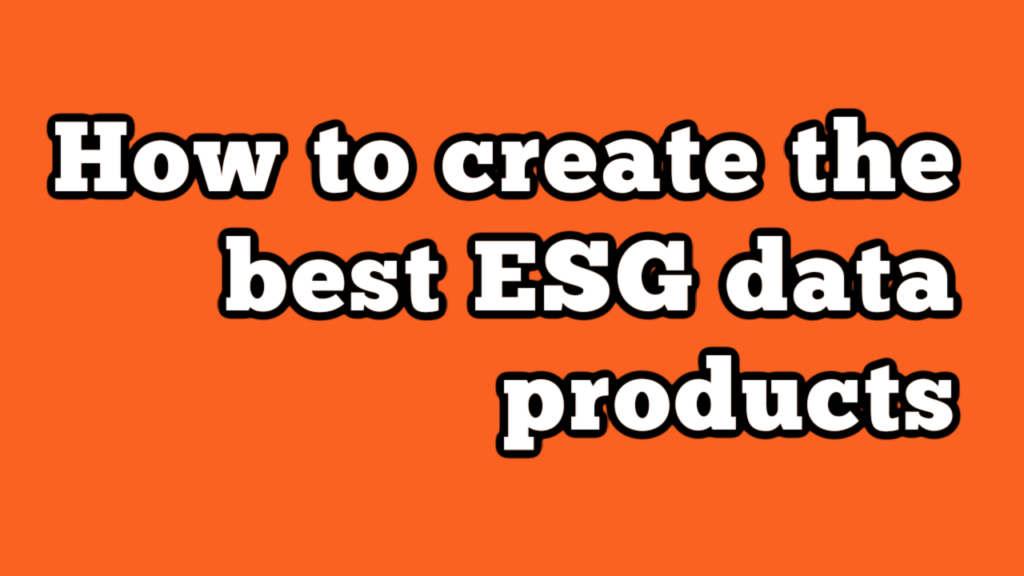How to create the best ESG data products

Here’s a note from Nawar Alsaadi:
Having worked in ESG data products development, and having consumed such data in an investment capacity. ESG data providers need to take in consideration the following elements when developing their ESG data products:
– It is often assumed by non-ESG investment professionals that investors know what they want when it comes to ESG data. This is a false assumption, many investors don’t know what ESG data or ESG metrics they want. This is largely due to the fact that ESG integration in an investment setting remains experimental. In many cases, investors would welcome a pre-packaged set of ESG metrics/solutions if those were delivered to them with a clear use case.
– Asset owners and asset managers may not know what ESG metrics they need, but they do know what problems they need to solve. Engage with as many clients as possible with the singular goal of understanding their challenges and design products that solve their problems, not products that solve your problems.
– When extracting and designing ESG metrics, ESG data providers need to be very clear as to whom the end user is within their customer base. ESG departments within asset owners and managers would likely have a very different uses for the data as opposed to investment teams. One way to approach this is to think of the various departments within asset managers and owners as distinct consumer groups. This state of affairs may change overtime, but as things stand today the ESG and investment teams within many institutions have a differing appetite and use cases for ESG data.
– Distinguish between spreadsheet users and dashboard users. Many ESG data providers spend considerable time designing amazing ESG data dashboards that no one uses since their customer base has a preference to download the raw data and analyze it through a spreadsheet.
– ESG terms definitions, many ESG data providers develop their own ESG risk indicators, while this is fine, it is critically important that these definitions are readily accessible to clients – Don’t hide these definitions in some obscure section of your website! If investors are to adopt and use your ESG metrics they need to fully understand them.
– Don’t assume that your client base is clear as to what constitute impact and what constitutes ESG integration. Definitions within the ESG space remain fluid, make sure to understand the client version of the various ESG terms is when approaching them with ESG/Impact solutions.
The above is not a comprehensive list of issues to consider, but the points above are often overlooked by ESG data providers, and especially new ESG data entrants without ESG investing expertise.
